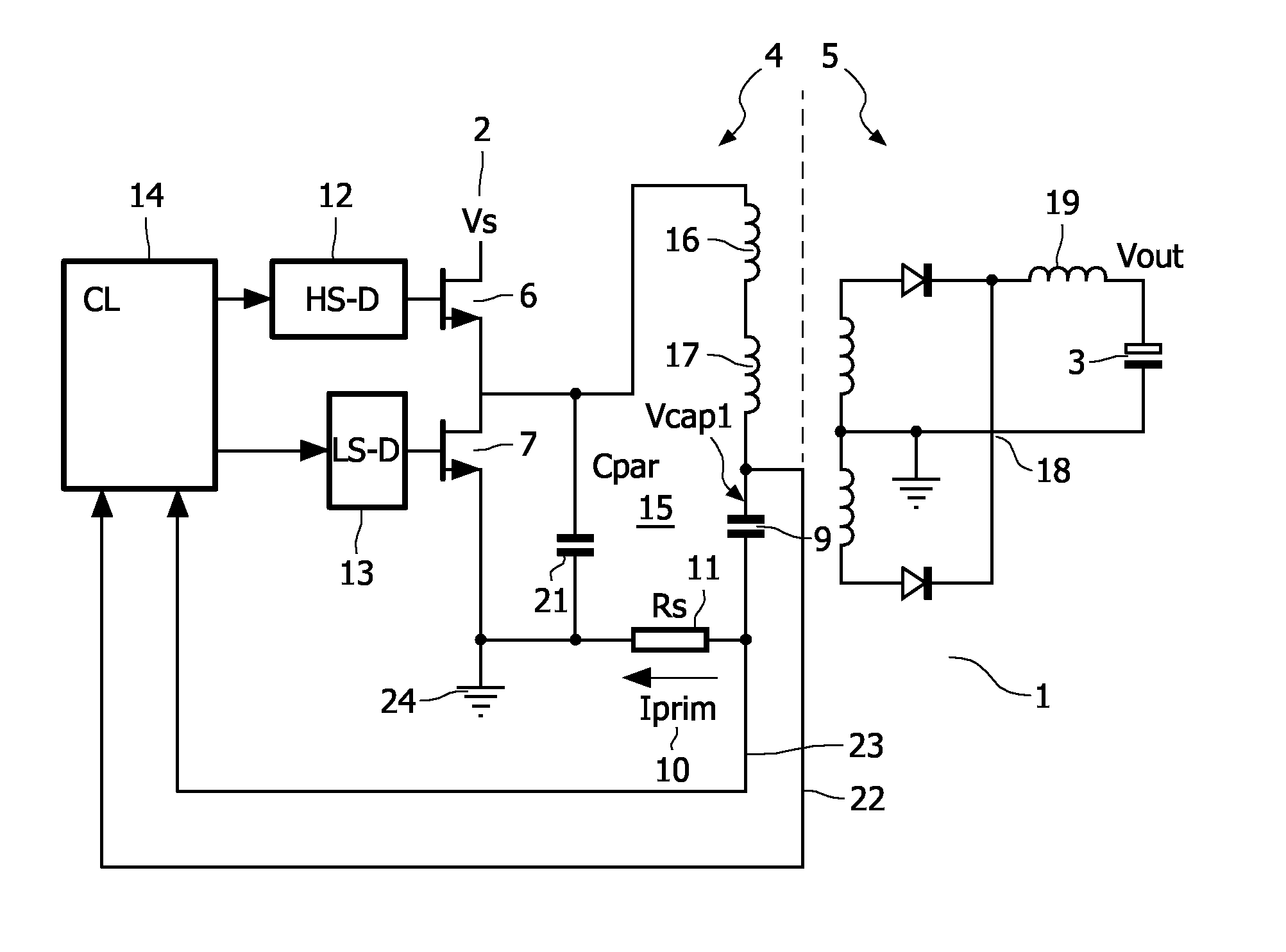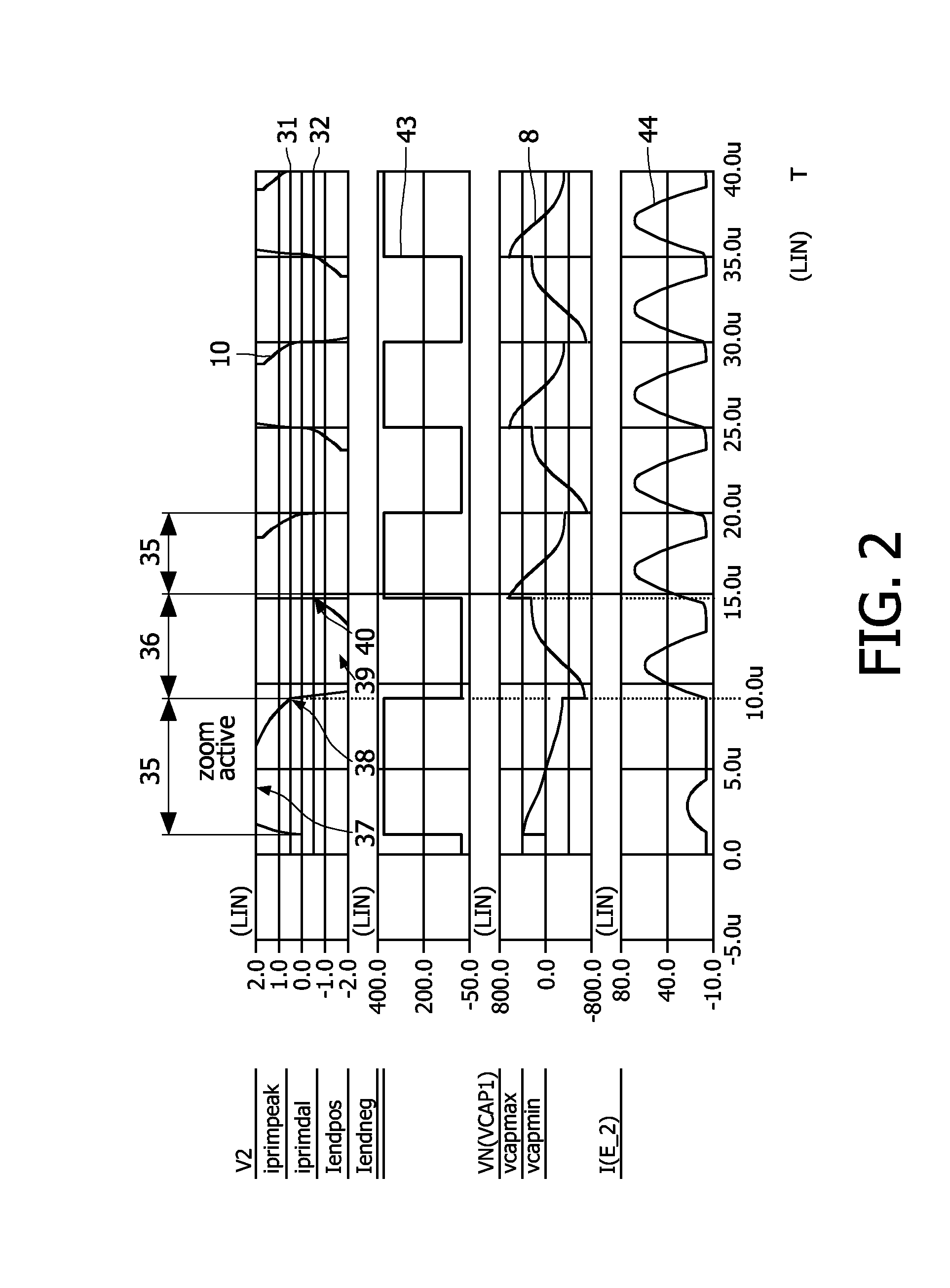Control of a resonant converter
a resonant converter and control technology, applied in the direction of electric variable regulation, process and machine control, instruments, etc., can solve the problems of difficult stability of the converter, non-overlap time bound to a maximum, switching loss, etc., to achieve the effect of reducing the number of turns on losses, improving the stability of the system, and fast control
- Summary
- Abstract
- Description
- Claims
- Application Information
AI Technical Summary
Benefits of technology
Problems solved by technology
Method used
Image
Examples
Embodiment Construction
[0021]FIG. 1 illustrates a basic diagram of a resonant LLC converter 1 which is formed as a resonant half-bridge converter. The converter comprises a transformer having a primary side 4 and a secondary side 5. The converter 1 is adapted to supply electric energy from a DC energy supply source, Vs 2 on the primary side of the transformer, to a load (not shown) connected at Vout 3 on the secondary side of the transformer.
[0022]Furthermore, the converter comprises a first and a second controllable switch, here denoted as a High Side (HS) controllable switch 6 and a Low Side (LS) controllable switch 7. The switches are arranged in series with each other. The high side and low side switches may, for example, be a transistor, a thyristor, a MOSFET, etc.
[0023]A resonant capacitor Cr 9 of the LLC converter is having a certain voltage Vcap18 at a point in the circuit. In the resonant tank 15 a current, Iprim 10 is flowing. The voltage Vcap1 is also referred to as the capacitor voltage, the v...
PUM
 Login to View More
Login to View More Abstract
Description
Claims
Application Information
 Login to View More
Login to View More - R&D
- Intellectual Property
- Life Sciences
- Materials
- Tech Scout
- Unparalleled Data Quality
- Higher Quality Content
- 60% Fewer Hallucinations
Browse by: Latest US Patents, China's latest patents, Technical Efficacy Thesaurus, Application Domain, Technology Topic, Popular Technical Reports.
© 2025 PatSnap. All rights reserved.Legal|Privacy policy|Modern Slavery Act Transparency Statement|Sitemap|About US| Contact US: help@patsnap.com



